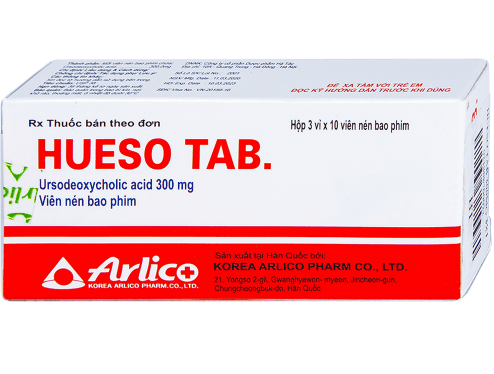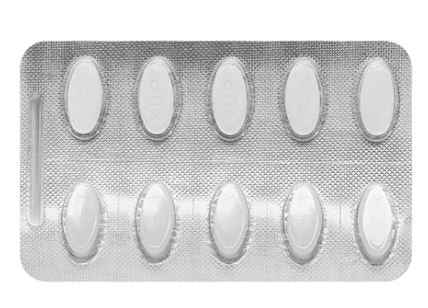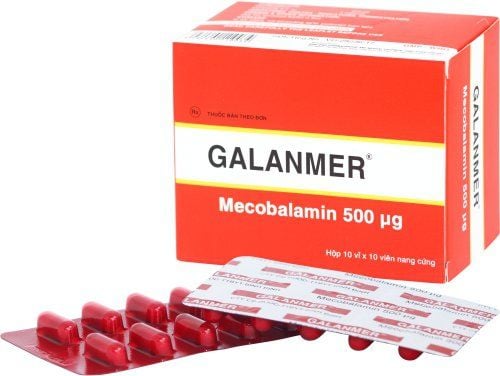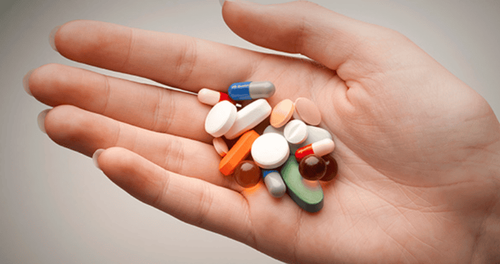This is an automatically translated article.
Gintarin belongs to the group of gastrointestinal drugs, which reduce cholesterol absorption and are used to dissolve gallstones in patients as an alternative to surgical procedures to remove gallstones.1. Effects of Gintarin
Gintarin has the main ingredients Ursodeoxycholic Acid, Taurine, White Ginseng Extract, Thiamine nitrate, Inositol. The drug belongs to the group of gastrointestinal drugs, used in the treatment of diseases such as:Treatment of chronic liver disease, especially symptoms of sclerosing cholangitis, primary biliary cirrhosis; liver disease caused by viscous mucus disease. Treatment of cholesterol gallstone disease: Small gallstones or gallstones asymptomatic, without contrast, less than 15mm in diameter, in patients with stones but not suitable for surgical indications. In addition, the Thiamine nitrate component in the drug is also used to treat and prevent thiamin deficiency, Wernicke and Korsakoff syndrome, polyneuritis, people with gastrointestinal disorders. Mechanism of action:
Gintarin acts on the liver - intestine cycle of endogenous bile acids: Increases bile secretion, reduces reabsorption of bile by inhibiting and reducing the concentration of endogenous bile acids in the liver. blood.
2. Dosage and how to use Gintarin
How to use: The drug is prepared in the form of soft capsules and used orally. It can be taken as a single dose in the evening or in two divided doses, once in the morning and once in the evening.
Duration of treatment : The duration of treatment will depend on the condition of the disease. For example, for common gallstone disease, the drug will last for about 6 months, but if the stone is larger than 1cm, the treatment time with Gintarin can last up to 1 year.
Dosage:
The usual dose of the patient can be used with a dose of 1 tablet x 2 times / day. In the prevention of gallstone disease, the dose is 300mg x 2 times/day. To dissolve gallstones use 8-12 mg/kg/day in 2-3 divided doses. In the treatment of primary biliary cirrhosis, the dose is 10-15mg/kg/day, divided into 2-4 times. In the treatment of cholesterol gallstones: Use an effective dose of 5 - 10mg/kg/day, with better conditions can use the average recommended dose of 7.5mg/kg/day. For patients with obesity, the recommended dose is 10mg/kg/day, depending on body weight, the dose ranges from 2 to 3 tablets/day. For the treatment of chronic hepatobiliary disease: Use a therapeutic dose of 13-15mg/kg/day. Initially, it should be used from a dose of 200mg / day, then gradually increase the dose to achieve the highest effect. For the treatment of acquired liver and biliary disease due to viscous mucus disease, the optimal therapeutic dose is 20mg/kg/day. Contraindications:
Do not use for patients with a history of allergy to Ursodeoxycholic Acid or any other ingredients of the drug. Gintarin should not be used in patients with inflammatory bowel disease and small bowel disease. The patient has a history of allergy to antacids. Patients with chronic liver disease and peptic ulcer disease. The patient is suffering from calcified and pigmented gallstone disease, the gallbladder is not functioning.
3. Gintarin side effects
Side effects that patients may experience during treatment with Gintarin include:
Diarrhea: This reaction is quite uncommon because the ingredients of the drug such as ursodeoxycholic acid do not irritate the intestinal mucosa. At the beginning of treatment for cholestatic liver, patients may experience side effects such as itching, urticaria. Therefore, to prevent this from happening, the doctor will recommend that the patient start with a starting dose of 200mg/day. Other less common reactions include: Nausea, vomiting, diarrhea, itchy skin, calcified gallstones, loose stools, rash.
4. Be careful when using Gintarin
For patients who use drugs for a long time, it is recommended to regularly follow the function of the rectum. In the case of patients being treated for cholesterol gallstone disease, the effectiveness of treatment should be checked after 6 months. Cholestasis with serum bilirubin levels above 200 micromol/L requires regular monitoring for therapeutic efficacy. For pregnant women: Animal studies have shown teratogenic potential, affecting fetal development. Although there are no adequate clinical studies to prove the results in humans, for pregnant women, doctors still recommend not to use the drug. Note during lactation: The drug may be excreted in breast milk and adversely affect the development of the newborn. It is best for nursing patients not to or limit taking the drug during lactation. lactation period. If necessary, breast-feeding should be discontinued while taking the drug.
5. Drug interactions
Abciximab, Acetylsalicylic Acid : Increased risk or increased severity of side effects. Acenocoumarol, Alteplase: The risk or severity of bleeding and bruising may be increased when these two drugs are combined with Ursodeoxycholic acid. Aluminum phosphate, aluminum chloride: Aluminum phosphate may cause decreased absorption of Ursodeoxycholic acid leading to decreased serum concentrations and potentially reduced therapeutic efficacy. Bezafibrate: The therapeutic efficacy of Ursodeoxycholic acid may be reduced when used in combination with Bezafibrate. Capmatinib: The serum concentration of Capmatinib may be decreased when it is combined with Ursodeoxycholic acid. Clindamycin: The metabolism of Clindamycin can be increased when combined with Ursodeoxycholic acid. Clofibrate: The therapeutic efficacy of Ursodeoxycholic acid may be reduced when used in combination with Clofibrate. Daunorubicin: Ursodeoxycholic acid may decrease the rate of excretion of Daunorubicin resulting in higher serum concentrations of Daunorubicin. Cholestyramine: The effectiveness of ursodeoxycholic acid is reduced by binding to cholestyramine. Therefore, when taking these two drugs together, it is advisable to divide the time of taking the medicine, about 5 hours apart. The basic information about Gintarin in the above article is for reference only. Because this is a prescription drug, patients should not use it on their own, but need to contact a specialist directly to get an appropriate prescription to ensure safety for health.













